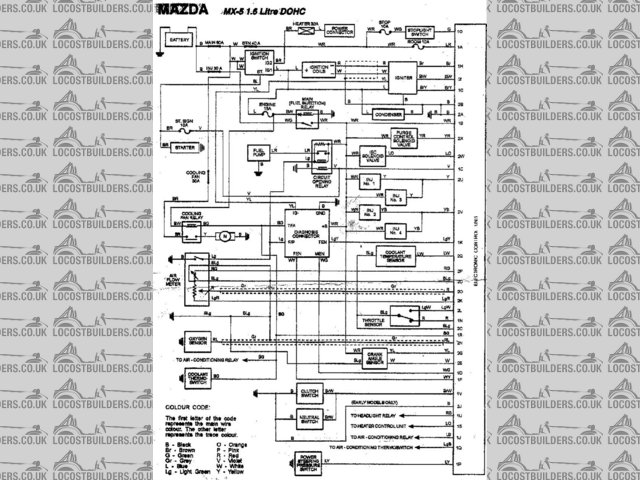

My Mazda donor has a clutch and brake switch mounted on the pedals. The brake is an obvious one, I think the clutch one is something to do with
idling? But I'm a bit confused how they fit. They only have a couple of mm travel, but the pedal moves further than that.
Can anyone give me a quick overview on how they're intended to work? I'm using a floor mounted pedal box based on the Haynes Roadster book
one.
I'm guessing at the functions a little but normally....
Brake pedal switch is brake lights (as you assumed)
Clutch pedal switch is normally to control fuel cut-off on over-run
They don't need to match the switch travel to the pedal travel as the switches are just on/off. When the driver operates either pedal the switch
moves from NO to NC or vice-versa.
[Edited on 14/8/20 by JAG]
I've just found the original fitting pictures, they're fitted to the front of the pedals so they release when the pedal is pressed. I was
under the assumption they were pressed when the pedal was pressed.
Time to make some brackets...
There are lots of theories on what the clutch switch does but it's not likley to cut fuel on over run.
This would be done with speed vs tps.
The clutch switch is likley to be a load switch that ups the rpm a touch, for example when at the lights to help you prevent stalling.
Fords have other load switches like the Ac and even the heated windscreen.
The switch is likley to be normally closed so on the Ford ecu's I run that pin direct to earth eliminating the switch.
It's worth looking at a wirring diagram to check if it's a chassis earth or a shared balanced earth. But that's usually for sensors
like the tps
[Edited on 14/8/20 by big_wasa]
quote:
Originally posted by big_wasa
It's worth looking at a worrying diagram to check if it's a chassis earth or a shared balanced earth. But that's usually for sensors like the tps
Clutch switch could have been Cruise Control disconnect and
some cars require clutch depression to start the engine.
quote:
Originally posted by avagolen
Clutch switch could have been Cruise Control disconnect and
some cars require clutch depression to start the engine.
quote:
Originally posted by Slimy38
quote:
Originally posted by big_wasa
It's worth looking at a worrying diagram to check if it's a chassis earth or a shared balanced earth. But that's usually for sensors like the tps
OK, consider me worried, what's the difference between a chassis earth and a shared balanced earth? I was going to bolt all the black wires to the chassis, is there a need to keep some isolated?

quote:
Originally posted by big_wasa
There are lots of theories on what the clutch switch does but it's not likley to cut fuel on over run.
This would be done with speed vs tps...
[Edited on 14/8/20 by big_wasa]
quote:
Clutch pedal switch is normally to control fuel cut-off on over-run

quote:
Originally posted by avagolen
Clutch switch could have been Cruise Control disconnect and
some cars require clutch depression to start the engine.
the clutch is for the muricans so you cant start it unless the clutch pedal is depressed, just bridge the 2 wires and bin the extra weight 
On US market cars the clutch switch will not allow the starter to activate unless the clutch is depressed --- it is wired the same as automatic
transmission gear lever postion switch.
I presume for UK market it is disabled in software.
[Edited on 14/8/20 by britishtrident]
quote:
Originally posted by JAG
quote:
Clutch pedal switch is normally to control fuel cut-off on over-run
This comment is based on my Mazda MX5 1.6 which has a clutch switch and a gearbox mounted neutral switch on the same circuit. If the circuit is not earthed then the ECU cut's fuel when the throttle is shut.
OP mentioned his engine was from a Mazda - so he may have the same set up
quote:
So if I understand you correctly, if I have;
1. Gearbox NOT in neutral.
2. Clutch pedal NOT pressed.
3. Throttle closed.
Then the ECU will cut the fuel? And in any other combination it maintains fueling?


